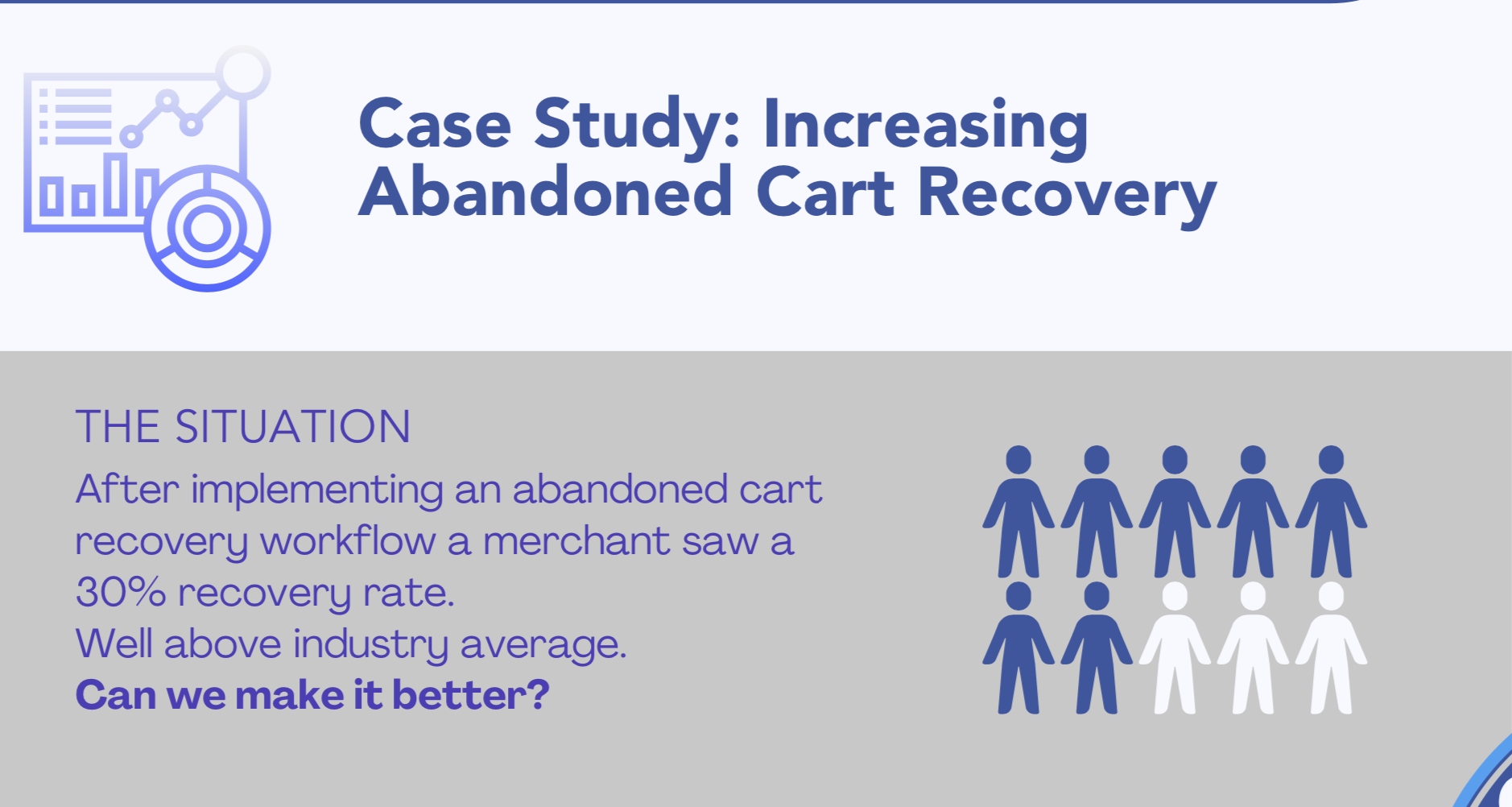Sarah Barad - Paper Plotter Guys
Abandoned carts recovery rates are hard and harder to increase with more and more people getting used to offers and finding an equivalent of 'window shopping' through abandoned carts. With over $4 trillion worth of merchandise abandoned, the estimation of the revenue merchants are keeping on the table is only getting bigger.
The average merchants recover less than 15% of their abandoned carts.
There are a few different approaches to increase abandoned cart recovery rates, but there is one keyword we recommend every merchant remembers: PERSONALIZATION.
A segmented approach allows personalized content to be the front and centre of your strategy. This means splitting customers into different groups based on things like purchase history and how likely they are to purchase again; this will help them decide what value must be provided to increase the chances of a sale.
Based on our research and data analysis, New Customers and Potential Core Customers (1 to 3 purchases) need a higher monetary motivation to finish checkout. The reason being that they don't yet know enough about your brand to have fallen in love with it. They are still getting to know you, the key is to make sure they do and that might mean some extra discounts to ensure they buy your products.
Core Customers (Big Spenders, Champions and Loyalist) who generally have purchased more than 4 times and have spent a significant amount of money with you, have also been with you longer than 6 months. This segments need more unique motivators and generally they are related to discounts, but to products. New products, free samples, cross-selling products based on past purchases, provide the value they are seeking from a brand that is part of their life.
With this in mind, a simple tool like a coupon generator can be leveraged in new ways. In our case study we've provided a discount to New Customers right away, while waiting until a second or third email for Core Customers.
The result? Higher conversions without any discounts.
Download our full case study! Or keep reading to get the key highlights.
The Strategy and Tools

The business in question is a major retailer that operates in the e-commerce space. They had been struggling with abandoned carts for some time, and were looking for a way to increase their recovery rate. In order to do this, the very first step was to set up an abandoned cart recovery workflow that targeted carts as soon as 15 minutes after they abandoned while providing a 10% discount as an offer. Slowly but surely, an increase in recovery was seen and after a few months it plateaued at around 26%, well above industry average but still leaving a big chunk of business on the table. What is the next step?
Segmentation and a data driven approach
We approached them with one clear idea, we decided to segment their customers into different categories based on their profitability and the time they had been customers for. This allowed them to focus their efforts on the most profitable and high-value customers in order to deliver personalized value to each segment. In addition, we set up a series of automated workflows that would target these segments with specific messages and offers in an attempt to recapture their business.
Data is at the center of this case study as the segments themselves were built using specific store data based on the RFM (Recency, Frequency and Monetary) principle. In addition, the offers and messages that were delivered to each segment were also personalized using data, analyzing client history and industry wide metrics regarding discounts and recovery rates. The use of data-driven marketing efforts is key to any successful abandoned cart strategy.
How are you and your business using your data? Step one is visualization. You need to see what is happening in your business and understand the story that the data is telling. You can then use this understanding to make better decisions about where you should focus your efforts. From there, it's important to start tracking how different marketing efforts are impacting your business so you can continue improving over time.

Neglecting data in shaping your abandoned cart strategy means missing out on potential profits. Are you ready to reclaim lost revenues? Abandoned carts result in a significant financial loss, with an average of $58 per cart.
The gravity of this situation becomes even more apparent when considering that the average shopping cart abandonment rate stands at a staggering 68%, indicating that a large portion of customers exit without making a purchase. This leaves merchants facing the daunting task of reengaging these lost customers, a task not for the faint-hearted.
The AMAZING results

The outcomes of this strategy have been truly remarkable. The business has experienced a significant boost in their recovery rate, with specific segments witnessing an impressive 15% increase even without offering any discounts! This results in cost savings for the merchant, optimization of acquisition spending, enhancement of Average Lifetime Value (ALV) for a customer segment, and increased engagement from previously lost customers. Moreover, there has been a surge in engagement from new customers achieving a remarkable 40% recovery rate.
This case study emphasizes the significance of customer segmentation and employing data-driven marketing strategies to boost recovery rates and enhance engagement. It highlights the effectiveness of customer cultivation concepts in reaching these objectives. By adopting a data-driven, segmented approach, businesses can enhance their opportunities of reclaiming lost revenue and fostering stronger connections with their customer base.
